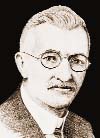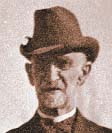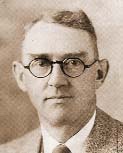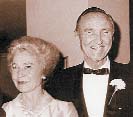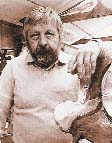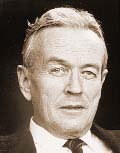1893-2000
A Timeline of Phenomenal UM Faculty |
1897
Morton J. Elrod (1897-1939)* established the Flathead Lake Biological Station in
1899, laying the groundwork for 100 years of research, study and preservation of precious
natural resources. |
1906
William “Daddy” Aber (1895-1919),* professor of Latin and Greek,
inspired a century of UM students to keep their campus beautiful. Each spring, the campus
community spends Aber Day planting trees, tending gardens and picking up litter in the
spirit of the founder. |
1914
Arthur Stone (1914-1942)* is known reverentially as "Dean Stone" around
UM's School of Journalism, which he established in 1914. Stone left a legacy of
well-trained journalists. |
| 1919
H.G. Merriam (1919-1954),* chair of UM's English department, helped establish the
nation’s second creative writing degree program, still counted among the finest such
programs in the country. Merriam inspired a love of the written word in nearly four
decades of students, and helped forge Montana's reputation as a literary powerhouse. |
| Harold Urey's (1919-21)* discovery of deuterium earned him a 1934 Nobel Prize,
but much to his chagrin also helped usher in the era of the atomic bomb and the Cold War.
After his work on the Manhattan Project, he joined Albert Einstein and other scientists in
opposing the atomic bomb, calling it "totally evil." |
| 1933
Maureen and Mike Mansfield (1933-1942; professor on leave 1942-1953)* look back
on a long history of service to Montana and the United States. Mike Mansfield represented
Montana in the U.S. House of Representatives during 1943-1952 and in the U.S. Senate
during 1953-1976, then was ambassador to Japan for 11 years. He, now 96, and Maureen hold
a special place in the hearts of Montanans. |
| 1953
Dorothy Johnson (1953-1967)* is best known for three of her stories that were
made into Hollywood movies: "The Man Who Shot Liberty Valance," "The
Hanging Tree" and "A Man Called Horse." She inspired generations of writers
as a journalism faculty member. |
| 1957
Rudy Autio (1957-1984),* founder of UM's ceramic arts department, spent 27 years
there teaching generations of students the fine art of ... fine art. |
| 1963
Richard Hugo (1963-1982),* director of UM's Creative Writing Program, established
an aesthetic of Montana literature that endures still: down-to-earth, gritty writing
solidly anchored in a sense of place. A bear of a man known for honesty and hard living,
Hugo left an indelible impression on legions of Montana writers and readers. |
| 1965
K. Ross Toole's (1965-1981)* extensive research and writing about Montana's
history earned him a reputation as the state's premier historian. But Toole brought
history to life, too: his teaching stirred students over the span of two decades. |
| 1976
Margery Hunter Brown (1976-1993)* founded the UM Indian Law Clinic, the first of
its kind in the nation. She was a Montana constitution specialist and scholar, and a
tireless defender of human rights. |
| 1991
Bonnie Heavy Runner (1991-1997),* director of UM's Native American Studies
Program, made Native American studies a major on campus. A Blackfeet tribal member, Heavy
Runner also championed human rights issues in Montana, particularly for Indians and women.
When she died in 1997, she left a legacy of learning, inspiration and humanity. |
| * Dates indicate years of UM faculty affiliation. |

